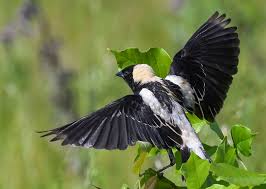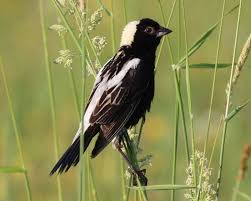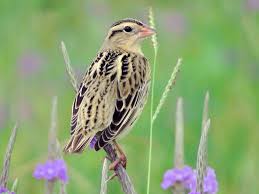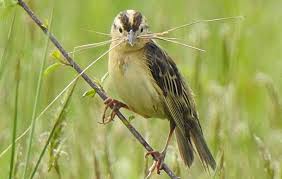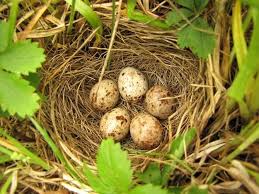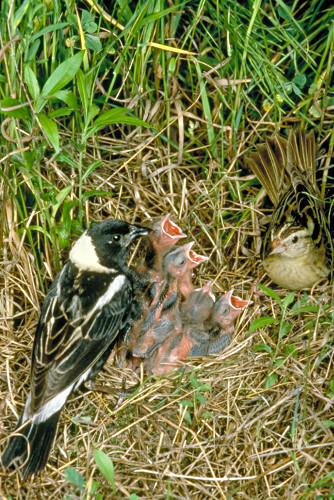by DJ Featherton
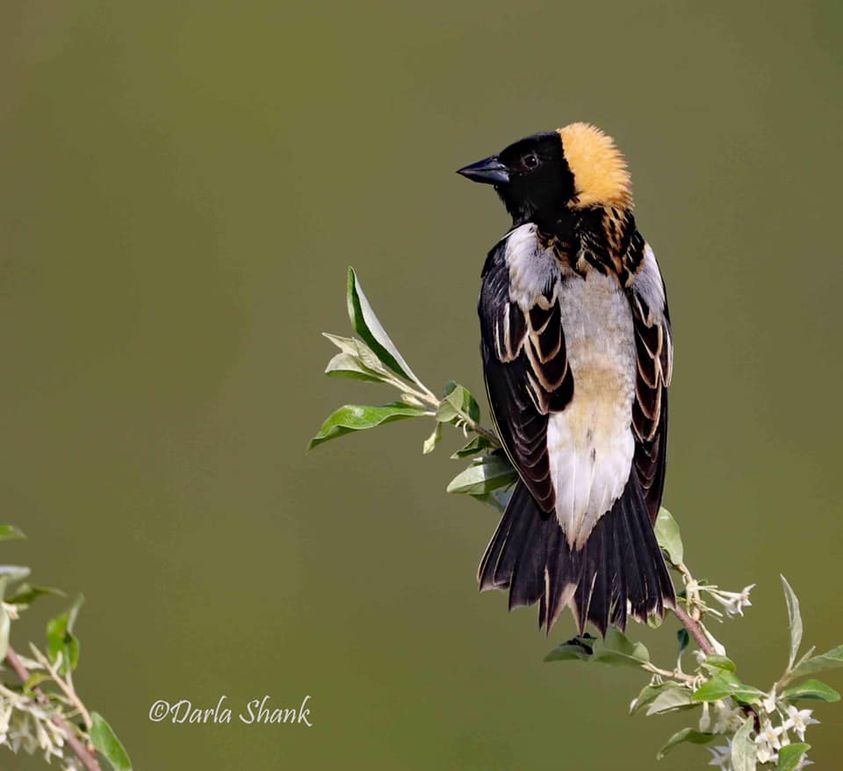
Bobolinks! Have you seen them? Are they on your list of positively identified birds? Although these common song birds breed across the northern half of the U.S. and southern Canada, they don’t get a lot of attention. They’re beautiful to look at, have a wonderful song, are social and travel in flocks. The male is black with frosty white on his back, and a distinctive yellow patch on the back of his head. The female is more subdued with light brown streaking on her face and below, then a darker brown back and wings. Though you have to listen carefully, their name comes from their sweet call, “baa baa link, baa baa link”. Quite nice.
At summer’s end, the Bobolink migrates further than any other bird. From the northern states, they will journey some 12,500 miles to southern South America every year. In fact, over their lifetime they may fly the equivalent of four to five times around the earth. For years scientists have marveled at how long range migrating birds manage the Coriolis effect. In other words, how do birds fly long distances in the air to find their target while the earth is moving east to west beneath them?
The answer is simple. Migrating Bobolinks can orient themselves to the earth’s magnetic field. This miracle is due to the iron oxide in their nasal cavity and in tissues around the olfactory bulb and nerve. Bobolinks also use the starry night sky to help navigate. I don’t know how the scientists know this stuff, but you can impress your birding friends by telling them about the Coriolis effect! I wonder if Columbus had anything in his nasal cavity? Oh well.

One of the reasons we don’t frequently see these birds at our bird feeders is because of their diet and preferred habitat. Bobolinks nest on the ground by open grassy fields, meadows, and marshes where they eat mainly seeds from wild plants. This keeps their flocks low to the ground and out in the country. They won’t eat at your backyard feeder. I read an interesting article about a backyard birder who lived near an open field and had flocks of Bobolinks feed on the ground in her yard for some twelve years and never went to her feeder. Yes, the Bobolinks are out there. We just don’t always share the same space.


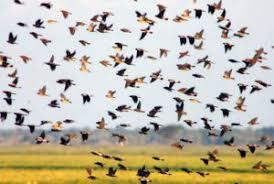
Although the Bobolinks are common, their numbers are, unfortunately, declining. Between 1966 and 2015 their population declined 2% each year. This is an overall decline of 65% as determined by the North American Breeding Bird Survey. Without major conservation help, the Bobolink could be in serious trouble. These birds have been shot as agricultural pests, trapped and sold as pets in Argentina, and eaten for food in Jamaica. Today, it’s loss of feeding habitat that leads the cause of their diminishing population. The Bobolink needs our help.
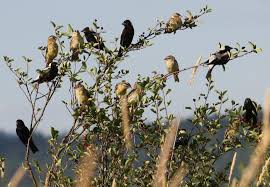
The Bobolink has been included in many famous works of poetry. If you would like to read one of the best descriptions of the beautiful Bobolink, read William Cullen Bryant’s famous poem, “Robert of Lincoln“.
Ok, it’s time to grab your trusty binocs and scope. Time to leave the yard and head for some hay fields and pastures. Listen for the sweet song of the Bobolink. Look for the black and white and yellow flashes of a flock of feeding Bobolinks. You’ll know what they are immediately. I’ll see ya out there!
